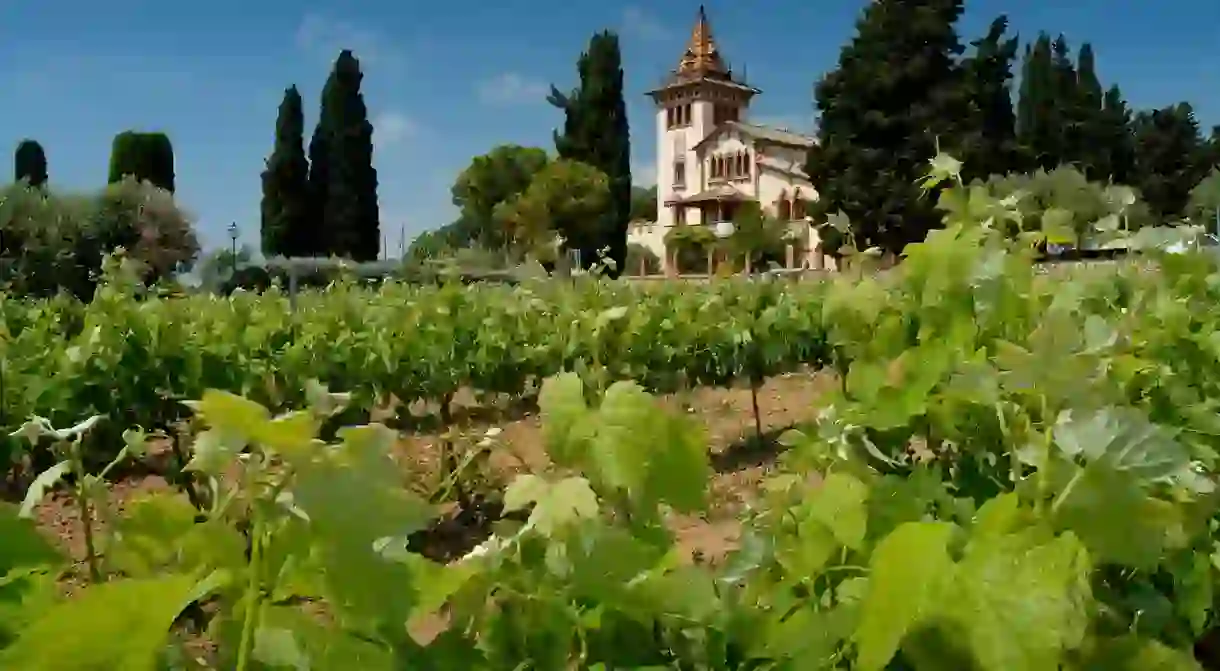Castilla Y Leon's Top 10 Wine Regions

For wine lovers, the region of Castilla y Leon is extremely promising. This region in Spain’s northwest is made up of open plains and rugged mountains, bisected by the winding Duero river making its way to Portugal. Castilla y Leon is Spain’s biggest wine-producing area – most famous for its pungent reds, the area also surprises with a large number of impressive whites. There are so many varieties that a wine lover could easily spend a few weeks here tasting one after another. If that sounds like your kind of trip, read on for our guide to the most interesting regions to visit in this fascinating part of Spain.
Ribera del Duero
The most famous wine-producing name in Castilla y Leon is Ribero del Duero. This region has some of the best (and best-known) bottles in Spain, rivalling Rioja. Sitting on a plateau near the town of Valladolid, vineyards here are devoted almost entirely to red wine production, with Tempranillo the most widely planted grape variety. The red wines from this region must be made of a minimum of 75% Tempranillo (locally called Tinto Fino) with small quantities of Cabernet Sauvignon, Malbec and Merlot allowed to make up the blend.

Sardon de Duero
To the west of Ribera del Duero, this region is renowned for its red wines, called Vino de la Tierra. The area forms part of the prestigious ‘Golden Mile’, made up of wineries dotted along the Duero river. Thought to have a special micro-climate, the Golden Mile is home to some of Spain’s most renowned wineries and has an ancient wine-making tradition dating back to Roman times. Despite this, the Sardon de Duero area is only recently making a name for itself and is not an official appellation.
Bierzo
Garnacha (grenache) is an important grape variety here, along with the local Mencia grapes. These are matured to produce wines known for their lively and intense flavour. The Mencia wines also have a distinctive mineral character thanks to the unusual terrain in this part of Castilla y Leon, where the soil contains a lot of slate and granite. You can also find rosé wines in the region, made from at least 50% Mencia.
Toro
Another region known for making robust reds. Tinta de Toro, a local form of Tempranillo, is by far the most dominant grape variety here. Toro (meaning ‘bull’) is named after a nearby town, but is very fitting for this powerful red.

Rueda
Castilla y Leon is famous for its powerful reds, but this is one of the areas where you’ll also find some excellent whites. On a high plateau known for its wild landscape, dry and very aromatic white wine is produced mainly from the Verdejo grape. The local Rueda Blanco wine must be at least 50% Verdejo. So pungent is the Verdejo grape’s aroma though that the addition of other more neutral varieties change it very little.
Arlanza
This small but fertile region only received DO status in 2007, making it one of the newest areas of Spain to be given the appellation despite wine being made here as far back as the 7th century. The area produces both whites and reds, using mainly Albillo and Viura grapes for white wine and Tinta del Pais (a type of Tempranillo), Garnacha (Grenache) and Mencia for the reds.
Cigales
An up-and-coming Spanish wine region, Cigales was awarded DO status relatively recently in 1991. Yet it has a long winemaking tradition, fitting for such a historic area where you can also visit numerous castles and monuments. This region feels the heat intensely in summer, which is great for ripening the Tinta del Pais (Tempranillo) and Garnacha (Grenache) grapes. These are mainly used for making dry rosé wines, but exciting reds can increasingly be found, made from the same grape varieties.

Tierra de Leon
Occupying a fertile plateau south of the Cordillera Cantábrica mountain range, this exceptionally sunny region is ideal for growing red wine grape varieties such as Mencía and the local Prieto Pricudo, used for fruity wines with good body. Local wine laws say Tierra de Leon’s red and rosé wines must be made using at least 60% of either grape.
Tierra del Vino de Zamora Wine
In the countryside around Zamora, a historic city in Castilla y Leon, you’ll find the Tierra del Vino de Zamora wine region. It sits on the banks of the Duero river, to the west of the Toro wine region. Viniculture has long been important here, with its great wines mentioned in medieval records. The region is permitted to grow traditional Spanish grape varieties, including Malvasia, Verdejo and Palomino for white wines, and Tempranillo, Garnacha and Cabernet Sauvignon for reds.
Valles de Benavente
Valles de Benavente is a Spanish Vino de Calidad (Wine of Quality) mark bestowed upon wines from a certain area of Castilla y Leon. It gets its name from the area of Benavente y Los Valles. The area, within an hour’s drive of the Portuguese border, is made up of varied terrain and includes four rivers; the Tera, Orbigo, Cea and Esla, all tributaries of the famous Duero. Red wines are more prevalent and based on Mencia, Tempranillo and Prieto Picudo grapes. The region’s white wines are made from Verdejo and Malvasia varieties.













